DIASPORAS AND ATLANTIC COMMUNIONS - YORUBÁIANO AND JUNTÓ: AYRSON HERÁCLITO
“Moving with great fluidity between spirituality, the production of visuality, academic reflection and political action, Heráclito is explicit when he says that he wants to ‘act, in a symbolic way, on the devastating consequences of racism and social inequality that affect the black populations'." In this way, the curator and researcher Solange Farkas (Videobrasil and ex-MAM Bahía) summarizes the approach to the production of Ayrson Heráclito, a Bahian artist who won a retrospective at the MAR (Museu de Arte do Rio) and who had an important recent solo show at the Simões de Assis Gallery, in São Paulo.
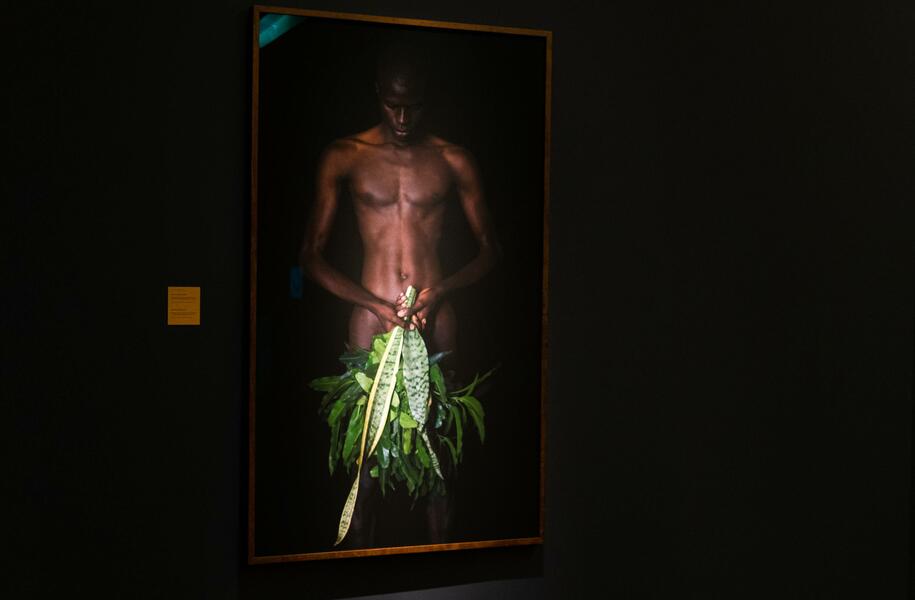
The panoramic view of Heráclito’s pulsating work crowns a gradual and persistent development, never superficial, which gained a more intense light abroad, especially during his participation in the 57th Venice Biennale, in 2017, and in various exhibitions in countries such as Germany, Angola, Portugal and Senegal, among others. The production of the Bahian artist has ceased to be a 'secret' in Brazil for many of the reasons listed by Solange. However, the deep connection with the spiritual side within art is striking (with inescapable and diverse names in the country, such as Mira Schendel and Mestre Didi, for example, but still an understudied aspect) and a fluid and changing formalization, configured by the best strategy driven by political, economic and social data and with strong historical and religious symbols.
“It has always been in my interest to work with 'intermediate' materials, that is, matter in its raw state - matter of reflection. Intermediate, because they are in a constant state of transformation due to their physical or symbolic nature. Materials that promote a direct association with a given theme and, at the same time, provoke an expansion of various other interpretations”, says the artist, in an interview conducted in 2017 about his participation in the collective Partilhas, Presenças, Projetos, en Blau Projects, in SP. "I found that some materials could be interpreted in a hegemonic way by various local social groups, for example, materials used in rituals and in Afro-Bahian cuisine. Following the path traced by Beuys, I want to arrive at the methexis - the concrete expression of an idea or spirituality. Palm oil is one of them. Simultaneously, I promote a decoding and a new way of absorbing its habitual meaning."
Juntó, a solo show recently exhibited at the São Paulo gallery, is also important in the artist's career due to its mobility in languages and media. Thus, Heráclito presents two sculptures and seven watercolors, means that broaden the artistic scope of his oeuvre. Six photographs complete the cut. The graphic work, with lightness and more subtle approaches, counterpoints the more robust material presence of the three-dimensional ones - despite the metal and the somewhat totemic structure that houses an elegant read in a formal key - and the colorful symbolism of the photographic pieces, a medium already known to the artist with mastery.
-
Ayrson Heráclito - Draká com Abebé, 2021 - stainless steel - 150 x 40 x 30 cm
-
Ayrson Heráclito - Draká com Abebé, 2021 - stainless steel - 150 x 40 x 30 cm
-
Ayrson Heráclito - Ibirí com Avivi, 2021 - stainless steel - 90 x 14 x 12 cm
-
Installation views. Photo: Ana Pigosso. Courtesy of Simões de Assis Gallery
-
Ayrson Heráclito Juntó – Opaxorô com Oxê, 2021 - watercolor on paper - 43 x 53 cm
Perhaps paradigmatic in this sense is O Pavão Azul e Pavão, com Cauda Abaixada, in which the intense blue, the hieratic posture of the bird and the enigmatic air, with readings related to Candomblé, an Afro-Brazilian religion followed by Heráclito for more than 30 years, cross their meanings with ecological purposes (in defense of the environment) and developments in contemporaneity (reinforcing ancestral and unique narratives, with pre-colonial roots, today exposed within a global artistic circuit). In other words, resistance as a political vector in production without neglecting today's visualities - Heráclito skillfully signs the facets of video artist and performer.
-
Installation views. Photo: Ana Pigosso. Courtesy of Simões de Assis Gallery
-
Installation views. Photo: Ana Pigosso. Courtesy of Simões de Assis Gallery
-
Ayrson Heráclito - O Banho de Òsún, 2020 - Photograph printed with mineral pigments on Canson Rag Photographique 310 g/m2 - 121 x 180 cm
-
Installation views. Photo: Ana Pigosso. Courtesy of Simões de Assis Gallery
-
Performance views. Photo: Ana Pigosso. Courtesy of Simões de Assis Gallery
An active artist since the late 80s, Heráclito has a good summary of his career in the Rio de Janeiro museum exhibition that runs until December, which includes an ambitious painting panel. Regresso à pintura baiana (2002-21), almost 10 m wide, in which the key ingredient in the cuisine of the Brazilian Northeast State is used as paint and, through gestures and drips, its texture, color and presence allude to other meanings of the stratified and deeply unequal Bahian society (and, by extension, the Brazilian one). From the first steps in its production, language is investigated and somehow decoupled by other developments, as in As Meninas (1988), whose title refers to Velázquez's masterpiece (1599-1660) and Foucault's text (1926-1984) about canvas, and consists of a performance that combined the rereading of canonical elements of art with a sharp critique, at the time, of the media.
-
Installation views. Yorubáiano - Ayrson Heráclito. Museu de Arte do Rio. Photos: Beatriz Gimenes.
-
Installation views. Yorubáiano - Ayrson Heráclito. Museu de Arte do Rio. Photos: Beatriz Gimenes.
-
Installation views. Yorubáiano - Ayrson Heráclito. Museu de Arte do Rio. Photos: Beatriz Gimenes.
-
Installation views. Yorubáiano - Ayrson Heráclito. Museu de Arte do Rio. Photos: Beatriz Gimenes.
-
Installation views. Yorubáiano - Ayrson Heráclito. Museu de Arte do Rio. Photos: Beatriz Gimenes.
-
Installation views. Yorubáiano - Ayrson Heráclito. Museu de Arte do Rio. Photos: Beatriz Gimenes.
Another key work in the retrospective is Divisor III (2002), in which water, salt and palm oil are placed in a large, heterogeneous, unmixed glass aquarium, in a clear metaphor for Brazilian society. The title is also the same as that of the central work of the famous Rio artist Lygia Pape (1927-2004), Divisor, from 1968, a year of conflict, in which the exponent of neo-concreteism created collective clothing that depended on joint efforts. to give effect to work.
-
Installation views. Yorubáiano - Ayrson Heráclito. Museu de Arte do Rio. Photos: Beatriz Gimenes.
-
Installation views. Yorubáiano - Ayrson Heráclito. Museu de Arte do Rio. Photos: Beatriz Gimenes.
-
Installation views. Yorubáiano - Ayrson Heráclito. Museu de Arte do Rio. Photos: Beatriz Gimenes.
-
Installation views. Yorubáiano - Ayrson Heráclito. Museu de Arte do Rio. Photos: Beatriz Gimenes.
-
Installation views. Yorubáiano - Ayrson Heráclito. Museu de Arte do Rio. Photos: Beatriz Gimenes.
-
Installation views. Yorubáiano - Ayrson Heráclito. Museu de Arte do Rio. Photos: Beatriz Gimenes.
Thus, in this clipping where he presents other essential pieces such as the video installation and photographic series O Sacudimento da Casa da Torre and O Sacudimento da Maison des Esclaves em Gorée (2015), screened in Venice, and Transmutação da carne (2015), a surprising performance that participated in the exhibition Terra Comunal, by Marina Abramovic in SP, Ayrson Heráclito consolidates his practically unmatched contribution to the contemporary scene of the country, between the archaic and the mediatized, the sacred and the common, the exorcised and the planned, the affective and the cerebral.
Yorubáiano - Ayrson Heráclito
Curators: Marcelo Campos and Amanda Bonan
Until December 2021
Museu de Arte do Rio
----
Juntó - Ayrson Heráclito
Text: Solange Farkas
Simões de Assis Gallery
Related Topics
May interest you
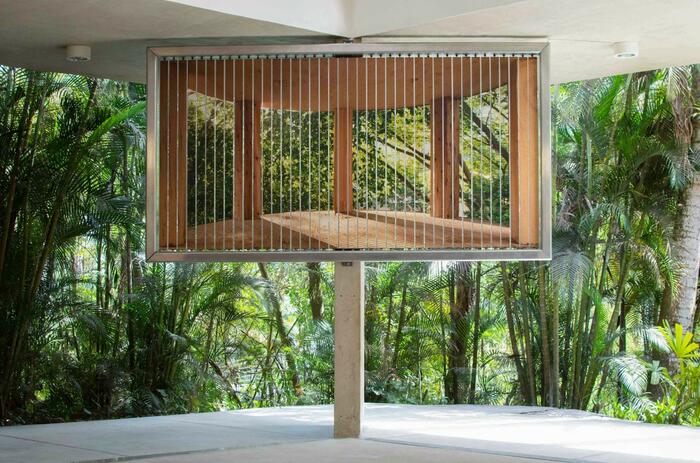
The flows of architecture and circulation in continuous movement set the tone for the new commissioned and individual works that are exhibited now at the Inhotim Institute. There are three projects as the result of almost two years of inactivity, without openings, in the immense space of the cultural center located in Brumadinho, in Greater Belo Horizonte, capital of Minas Gerais. It is a mix between a botanical garden and a refuge for contemporary art works specially developed for the institution or that have been reformatted in this special exhibition context that extends over an old estate, now with 140 hectares of visitation.
ARTIFICIAL PARADISES - RÓMMULO VIEIRA CONCEIÇÃO, LUCIA KOCH AND ALEKSANDRA MIR
The flows of architecture and circulation in continuous movement set the tone for the new commissioned and individual works that are exhibited now at the Inhotim Institute. There are three projects as the result of almost two years of inactivity, without openings, in the immense space of the cultural center located in Brumadinho, in Greater Belo Horizonte, capital of Minas Gerais. It is a mix between a botanical garden and a refuge for contemporary art works specially developed for the institution or that have been reformatted in this special exhibition context that extends over an old estate, now with 140 hectares of visitation.

The flows of architecture and circulation in continuous movement set the tone for the new commissioned and individual works that are exhibited now at the Inhotim Institute. There are three projects as the result of almost two years of inactivity, without openings, in the immense space of the cultural center located in Brumadinho, in Greater Belo Horizonte, capital of Minas Gerais. It is a mix between a botanical garden and a refuge for contemporary art works specially developed for the institution or that have been reformatted in this special exhibition context that extends over an old estate, now with 140 hectares of visitation.
ARTIFICIAL PARADISES - RÓMMULO VIEIRA CONCEIÇÃO, LUCIA KOCH AND ALEKSANDRA MIR
The flows of architecture and circulation in continuous movement set the tone for the new commissioned and individual works that are exhibited now at the Inhotim Institute. There are three projects as the result of almost two years of inactivity, without openings, in the immense space of the cultural center located in Brumadinho, in Greater Belo Horizonte, capital of Minas Gerais. It is a mix between a botanical garden and a refuge for contemporary art works specially developed for the institution or that have been reformatted in this special exhibition context that extends over an old estate, now with 140 hectares of visitation.
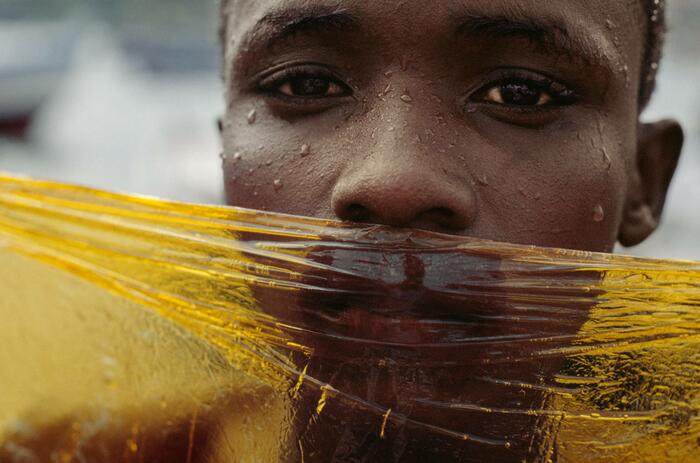
The 322 pieces that make up Espíritos sem nome (Nameless Spirits), a retrospective dedicated to the production of the Bahian Mario Cravo Neto (1947-2009) at the São Paulo headquarters of the Moreira Salles Institute, attest to his vigor as a visual artist; With the robustness of his work, he permeates media beyond photography, since he produces pieces in languages such as cinema, the three-dimensional, drawing and publishing, among others.
CONTEMPORARY AND TIMELESS - MARIO CRAVO NETO: NAMELESS SPIRITS
The 322 pieces that make up Espíritos sem nome (Nameless Spirits), a retrospective dedicated to the production of the Bahian Mario Cravo Neto (1947-2009) at the São Paulo headquarters of the Moreira Salles Institute, attest to his vigor as a visual artist; With the robustness of his work, he permeates media beyond photography, since he produces pieces in languages such as cinema, the three-dimensional, drawing and publishing, among others.

One of the main art events in Latin America, after a one-year postponement due to the pandemic, opens its main exhibition Faz escuro mas eu canto [Though it’s dark, still I sing] with more than one thousand works by 91 artists. Curated by Jacopo Crivelli Visconti (chief curator), Paulo Miyada (adjunct curator), and Carla Zaccagnini, Francesco Stocchi and Ruth Estévez (guest curators).
THE 34TH BIENAL DE SÃO PAULO INAUGURATES “THOUGH IT’S DARK, STILL I SING”
One of the main art events in Latin America, after a one-year postponement due to the pandemic, opens its main exhibition Faz escuro mas eu canto [Though it’s dark, still I sing] with more than one thousand works by 91 artists. Curated by Jacopo Crivelli Visconti (chief curator), Paulo Miyada (adjunct curator), and Carla Zaccagnini, Francesco Stocchi and Ruth Estévez (guest curators).
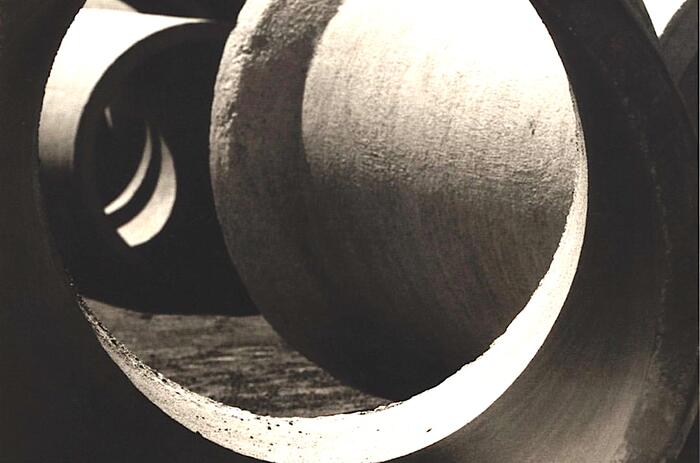
Gertrudes Altschul (1904–1962) was a pioneering figure in Brazilian modernist photography. Despite being acknowledged in the field in Brazil, her work is known only in specialized circles, having been scantly published and exhibited—something that this exhibition, the first in a museum, and its publication intend to rectify.
THE MUSEU DE ARTE DE SÃO PAULO EXHIBITS GETRUDES ALTSCHUL: FILIGREE
Gertrudes Altschul (1904–1962) was a pioneering figure in Brazilian modernist photography. Despite being acknowledged in the field in Brazil, her work is known only in specialized circles, having been scantly published and exhibited—something that this exhibition, the first in a museum, and its publication intend to rectify.
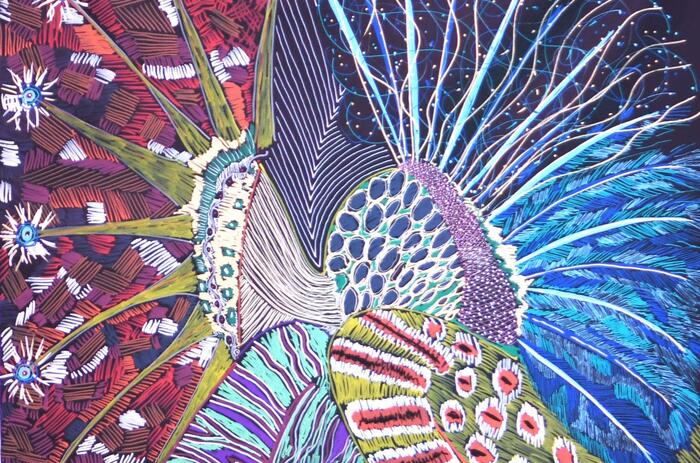
Curated by Jaider Esbell, and within the context of the 34th Bienal de São Paulo, the group exhibition Moquém_Surarî gathers contemporary artworks by indigenous artists. The exhibition at MAM São Paulo will include drawings, paintings, photographs and sculptures referring to the visual transformations on the cosmological and the narrative Amerindian thinking.
“MOQUÉM_SURARÎ: CONTEMPORARY INDIGENOUS ART” AT THE MUSEU DE ARTE MODERNA DE SÃO PAULO
Curated by Jaider Esbell, and within the context of the 34th Bienal de São Paulo, the group exhibition Moquém_Surarî gathers contemporary artworks by indigenous artists. The exhibition at MAM São Paulo will include drawings, paintings, photographs and sculptures referring to the visual transformations on the cosmological and the narrative Amerindian thinking.
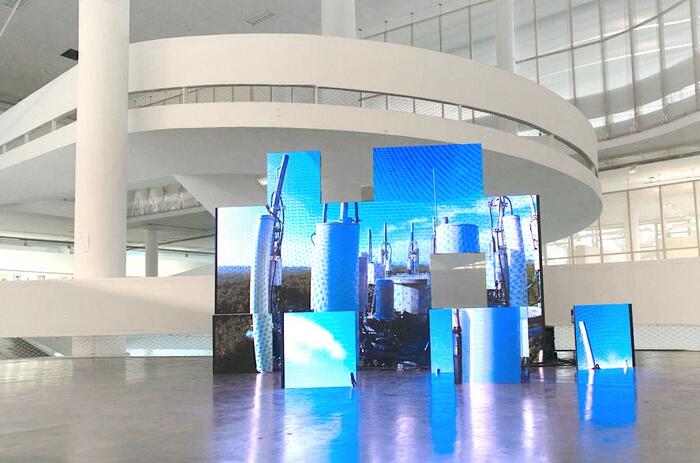
One of the key works of the 34th São Paulo Biennial literally anchors the robust and uncomfortable presence between the interstitial areas of this modernist building, so questioned today. However, its meanings go beyond the perimeters of the construction and extend to, for example, some of the civic sculptures that populate public places throughout Brazil and that are also located in the surroundings.
SILENT RISINGS - 34th BIENNIAL OF SÃO PAULO, JURACI DÓREA AND GIORGIO MORANDI
One of the key works of the 34th São Paulo Biennial literally anchors the robust and uncomfortable presence between the interstitial areas of this modernist building, so questioned today. However, its meanings go beyond the perimeters of the construction and extend to, for example, some of the civic sculptures that populate public places throughout Brazil and that are also located in the surroundings.
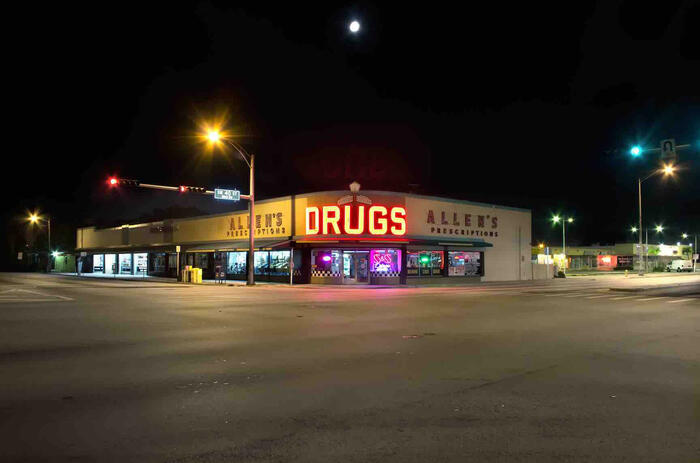
This exhibition features thirteen photographs by Gory from the Moonlight Serenade series (2012-2018). The essay by the curator Julia P. Herzberg discusses the varied contexts of the photographs, which are exhibited and discussed here for the first time.
ROGELIO LÓPEZ MARÍN (GORY): AT THE INTERSECTIONS OF PHOTOGRAPHY, MUSIC, AND DESIGN AT LnS
This exhibition features thirteen photographs by Gory from the Moonlight Serenade series (2012-2018). The essay by the curator Julia P. Herzberg discusses the varied contexts of the photographs, which are exhibited and discussed here for the first time.
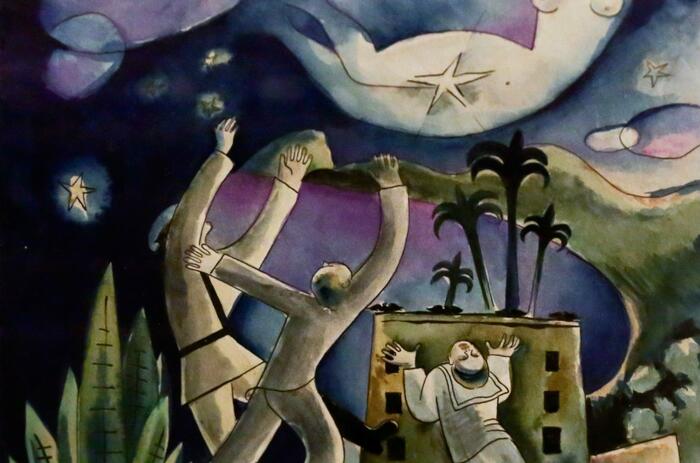
On the occasion of the centenary anniversary of the 1922 Modern Art Week, a key event for the artistic avant-gardes in Brazil and which consolidated what would become known as modernism in the country, several exhibitions throughout the year (and also in 2021) revolved around, discussed, explained, replaced and 'cancelled' such an initiative. Considered a milestone in the cultural renewal of Brazilian art, the week was about to turn around in its already canonical grave.
AN AVANT-GARDE IN LOCAL COLORS - ONCE UPON A MODERN TIME
On the occasion of the centenary anniversary of the 1922 Modern Art Week, a key event for the artistic avant-gardes in Brazil and which consolidated what would become known as modernism in the country, several exhibitions throughout the year (and also in 2021) revolved around, discussed, explained, replaced and 'cancelled' such an initiative. Considered a milestone in the cultural renewal of Brazilian art, the week was about to turn around in its already canonical grave.

The flows of architecture and circulation in continuous movement set the tone for the new commissioned and individual works that are exhibited now at the Inhotim Institute. There are three projects as the result of almost two years of inactivity, without openings, in the immense space of the cultural center located in Brumadinho, in Greater Belo Horizonte, capital of Minas Gerais. It is a mix between a botanical garden and a refuge for contemporary art works specially developed for the institution or that have been reformatted in this special exhibition context that extends over an old estate, now with 140 hectares of visitation.
ARTIFICIAL PARADISES - RÓMMULO VIEIRA CONCEIÇÃO, LUCIA KOCH AND ALEKSANDRA MIR
The flows of architecture and circulation in continuous movement set the tone for the new commissioned and individual works that are exhibited now at the Inhotim Institute. There are three projects as the result of almost two years of inactivity, without openings, in the immense space of the cultural center located in Brumadinho, in Greater Belo Horizonte, capital of Minas Gerais. It is a mix between a botanical garden and a refuge for contemporary art works specially developed for the institution or that have been reformatted in this special exhibition context that extends over an old estate, now with 140 hectares of visitation.

The 322 pieces that make up Espíritos sem nome (Nameless Spirits), a retrospective dedicated to the production of the Bahian Mario Cravo Neto (1947-2009) at the São Paulo headquarters of the Moreira Salles Institute, attest to his vigor as a visual artist; With the robustness of his work, he permeates media beyond photography, since he produces pieces in languages such as cinema, the three-dimensional, drawing and publishing, among others.
CONTEMPORARY AND TIMELESS - MARIO CRAVO NETO: NAMELESS SPIRITS
The 322 pieces that make up Espíritos sem nome (Nameless Spirits), a retrospective dedicated to the production of the Bahian Mario Cravo Neto (1947-2009) at the São Paulo headquarters of the Moreira Salles Institute, attest to his vigor as a visual artist; With the robustness of his work, he permeates media beyond photography, since he produces pieces in languages such as cinema, the three-dimensional, drawing and publishing, among others.

One of the main art events in Latin America, after a one-year postponement due to the pandemic, opens its main exhibition Faz escuro mas eu canto [Though it’s dark, still I sing] with more than one thousand works by 91 artists. Curated by Jacopo Crivelli Visconti (chief curator), Paulo Miyada (adjunct curator), and Carla Zaccagnini, Francesco Stocchi and Ruth Estévez (guest curators).
THE 34TH BIENAL DE SÃO PAULO INAUGURATES “THOUGH IT’S DARK, STILL I SING”
One of the main art events in Latin America, after a one-year postponement due to the pandemic, opens its main exhibition Faz escuro mas eu canto [Though it’s dark, still I sing] with more than one thousand works by 91 artists. Curated by Jacopo Crivelli Visconti (chief curator), Paulo Miyada (adjunct curator), and Carla Zaccagnini, Francesco Stocchi and Ruth Estévez (guest curators).

Gertrudes Altschul (1904–1962) was a pioneering figure in Brazilian modernist photography. Despite being acknowledged in the field in Brazil, her work is known only in specialized circles, having been scantly published and exhibited—something that this exhibition, the first in a museum, and its publication intend to rectify.
THE MUSEU DE ARTE DE SÃO PAULO EXHIBITS GETRUDES ALTSCHUL: FILIGREE
Gertrudes Altschul (1904–1962) was a pioneering figure in Brazilian modernist photography. Despite being acknowledged in the field in Brazil, her work is known only in specialized circles, having been scantly published and exhibited—something that this exhibition, the first in a museum, and its publication intend to rectify.

Curated by Jaider Esbell, and within the context of the 34th Bienal de São Paulo, the group exhibition Moquém_Surarî gathers contemporary artworks by indigenous artists. The exhibition at MAM São Paulo will include drawings, paintings, photographs and sculptures referring to the visual transformations on the cosmological and the narrative Amerindian thinking.
“MOQUÉM_SURARÎ: CONTEMPORARY INDIGENOUS ART” AT THE MUSEU DE ARTE MODERNA DE SÃO PAULO
Curated by Jaider Esbell, and within the context of the 34th Bienal de São Paulo, the group exhibition Moquém_Surarî gathers contemporary artworks by indigenous artists. The exhibition at MAM São Paulo will include drawings, paintings, photographs and sculptures referring to the visual transformations on the cosmological and the narrative Amerindian thinking.

One of the key works of the 34th São Paulo Biennial literally anchors the robust and uncomfortable presence between the interstitial areas of this modernist building, so questioned today. However, its meanings go beyond the perimeters of the construction and extend to, for example, some of the civic sculptures that populate public places throughout Brazil and that are also located in the surroundings.
SILENT RISINGS - 34th BIENNIAL OF SÃO PAULO, JURACI DÓREA AND GIORGIO MORANDI
One of the key works of the 34th São Paulo Biennial literally anchors the robust and uncomfortable presence between the interstitial areas of this modernist building, so questioned today. However, its meanings go beyond the perimeters of the construction and extend to, for example, some of the civic sculptures that populate public places throughout Brazil and that are also located in the surroundings.

This exhibition features thirteen photographs by Gory from the Moonlight Serenade series (2012-2018). The essay by the curator Julia P. Herzberg discusses the varied contexts of the photographs, which are exhibited and discussed here for the first time.
ROGELIO LÓPEZ MARÍN (GORY): AT THE INTERSECTIONS OF PHOTOGRAPHY, MUSIC, AND DESIGN AT LnS
This exhibition features thirteen photographs by Gory from the Moonlight Serenade series (2012-2018). The essay by the curator Julia P. Herzberg discusses the varied contexts of the photographs, which are exhibited and discussed here for the first time.

On the occasion of the centenary anniversary of the 1922 Modern Art Week, a key event for the artistic avant-gardes in Brazil and which consolidated what would become known as modernism in the country, several exhibitions throughout the year (and also in 2021) revolved around, discussed, explained, replaced and 'cancelled' such an initiative. Considered a milestone in the cultural renewal of Brazilian art, the week was about to turn around in its already canonical grave.
AN AVANT-GARDE IN LOCAL COLORS - ONCE UPON A MODERN TIME
On the occasion of the centenary anniversary of the 1922 Modern Art Week, a key event for the artistic avant-gardes in Brazil and which consolidated what would become known as modernism in the country, several exhibitions throughout the year (and also in 2021) revolved around, discussed, explained, replaced and 'cancelled' such an initiative. Considered a milestone in the cultural renewal of Brazilian art, the week was about to turn around in its already canonical grave.

The flows of architecture and circulation in continuous movement set the tone for the new commissioned and individual works that are exhibited now at the Inhotim Institute. There are three projects as the result of almost two years of inactivity, without openings, in the immense space of the cultural center located in Brumadinho, in Greater Belo Horizonte, capital of Minas Gerais. It is a mix between a botanical garden and a refuge for contemporary art works specially developed for the institution or that have been reformatted in this special exhibition context that extends over an old estate, now with 140 hectares of visitation.
ARTIFICIAL PARADISES - RÓMMULO VIEIRA CONCEIÇÃO, LUCIA KOCH AND ALEKSANDRA MIR
The flows of architecture and circulation in continuous movement set the tone for the new commissioned and individual works that are exhibited now at the Inhotim Institute. There are three projects as the result of almost two years of inactivity, without openings, in the immense space of the cultural center located in Brumadinho, in Greater Belo Horizonte, capital of Minas Gerais. It is a mix between a botanical garden and a refuge for contemporary art works specially developed for the institution or that have been reformatted in this special exhibition context that extends over an old estate, now with 140 hectares of visitation.

The 322 pieces that make up Espíritos sem nome (Nameless Spirits), a retrospective dedicated to the production of the Bahian Mario Cravo Neto (1947-2009) at the São Paulo headquarters of the Moreira Salles Institute, attest to his vigor as a visual artist; With the robustness of his work, he permeates media beyond photography, since he produces pieces in languages such as cinema, the three-dimensional, drawing and publishing, among others.
CONTEMPORARY AND TIMELESS - MARIO CRAVO NETO: NAMELESS SPIRITS
The 322 pieces that make up Espíritos sem nome (Nameless Spirits), a retrospective dedicated to the production of the Bahian Mario Cravo Neto (1947-2009) at the São Paulo headquarters of the Moreira Salles Institute, attest to his vigor as a visual artist; With the robustness of his work, he permeates media beyond photography, since he produces pieces in languages such as cinema, the three-dimensional, drawing and publishing, among others.

One of the main art events in Latin America, after a one-year postponement due to the pandemic, opens its main exhibition Faz escuro mas eu canto [Though it’s dark, still I sing] with more than one thousand works by 91 artists. Curated by Jacopo Crivelli Visconti (chief curator), Paulo Miyada (adjunct curator), and Carla Zaccagnini, Francesco Stocchi and Ruth Estévez (guest curators).
THE 34TH BIENAL DE SÃO PAULO INAUGURATES “THOUGH IT’S DARK, STILL I SING”
One of the main art events in Latin America, after a one-year postponement due to the pandemic, opens its main exhibition Faz escuro mas eu canto [Though it’s dark, still I sing] with more than one thousand works by 91 artists. Curated by Jacopo Crivelli Visconti (chief curator), Paulo Miyada (adjunct curator), and Carla Zaccagnini, Francesco Stocchi and Ruth Estévez (guest curators).

Gertrudes Altschul (1904–1962) was a pioneering figure in Brazilian modernist photography. Despite being acknowledged in the field in Brazil, her work is known only in specialized circles, having been scantly published and exhibited—something that this exhibition, the first in a museum, and its publication intend to rectify.
THE MUSEU DE ARTE DE SÃO PAULO EXHIBITS GETRUDES ALTSCHUL: FILIGREE
Gertrudes Altschul (1904–1962) was a pioneering figure in Brazilian modernist photography. Despite being acknowledged in the field in Brazil, her work is known only in specialized circles, having been scantly published and exhibited—something that this exhibition, the first in a museum, and its publication intend to rectify.

Curated by Jaider Esbell, and within the context of the 34th Bienal de São Paulo, the group exhibition Moquém_Surarî gathers contemporary artworks by indigenous artists. The exhibition at MAM São Paulo will include drawings, paintings, photographs and sculptures referring to the visual transformations on the cosmological and the narrative Amerindian thinking.
“MOQUÉM_SURARÎ: CONTEMPORARY INDIGENOUS ART” AT THE MUSEU DE ARTE MODERNA DE SÃO PAULO
Curated by Jaider Esbell, and within the context of the 34th Bienal de São Paulo, the group exhibition Moquém_Surarî gathers contemporary artworks by indigenous artists. The exhibition at MAM São Paulo will include drawings, paintings, photographs and sculptures referring to the visual transformations on the cosmological and the narrative Amerindian thinking.

One of the key works of the 34th São Paulo Biennial literally anchors the robust and uncomfortable presence between the interstitial areas of this modernist building, so questioned today. However, its meanings go beyond the perimeters of the construction and extend to, for example, some of the civic sculptures that populate public places throughout Brazil and that are also located in the surroundings.
SILENT RISINGS - 34th BIENNIAL OF SÃO PAULO, JURACI DÓREA AND GIORGIO MORANDI
One of the key works of the 34th São Paulo Biennial literally anchors the robust and uncomfortable presence between the interstitial areas of this modernist building, so questioned today. However, its meanings go beyond the perimeters of the construction and extend to, for example, some of the civic sculptures that populate public places throughout Brazil and that are also located in the surroundings.

This exhibition features thirteen photographs by Gory from the Moonlight Serenade series (2012-2018). The essay by the curator Julia P. Herzberg discusses the varied contexts of the photographs, which are exhibited and discussed here for the first time.
ROGELIO LÓPEZ MARÍN (GORY): AT THE INTERSECTIONS OF PHOTOGRAPHY, MUSIC, AND DESIGN AT LnS
This exhibition features thirteen photographs by Gory from the Moonlight Serenade series (2012-2018). The essay by the curator Julia P. Herzberg discusses the varied contexts of the photographs, which are exhibited and discussed here for the first time.

On the occasion of the centenary anniversary of the 1922 Modern Art Week, a key event for the artistic avant-gardes in Brazil and which consolidated what would become known as modernism in the country, several exhibitions throughout the year (and also in 2021) revolved around, discussed, explained, replaced and 'cancelled' such an initiative. Considered a milestone in the cultural renewal of Brazilian art, the week was about to turn around in its already canonical grave.
AN AVANT-GARDE IN LOCAL COLORS - ONCE UPON A MODERN TIME
On the occasion of the centenary anniversary of the 1922 Modern Art Week, a key event for the artistic avant-gardes in Brazil and which consolidated what would become known as modernism in the country, several exhibitions throughout the year (and also in 2021) revolved around, discussed, explained, replaced and 'cancelled' such an initiative. Considered a milestone in the cultural renewal of Brazilian art, the week was about to turn around in its already canonical grave.

The flows of architecture and circulation in continuous movement set the tone for the new commissioned and individual works that are exhibited now at the Inhotim Institute. There are three projects as the result of almost two years of inactivity, without openings, in the immense space of the cultural center located in Brumadinho, in Greater Belo Horizonte, capital of Minas Gerais. It is a mix between a botanical garden and a refuge for contemporary art works specially developed for the institution or that have been reformatted in this special exhibition context that extends over an old estate, now with 140 hectares of visitation.
ARTIFICIAL PARADISES - RÓMMULO VIEIRA CONCEIÇÃO, LUCIA KOCH AND ALEKSANDRA MIR
The flows of architecture and circulation in continuous movement set the tone for the new commissioned and individual works that are exhibited now at the Inhotim Institute. There are three projects as the result of almost two years of inactivity, without openings, in the immense space of the cultural center located in Brumadinho, in Greater Belo Horizonte, capital of Minas Gerais. It is a mix between a botanical garden and a refuge for contemporary art works specially developed for the institution or that have been reformatted in this special exhibition context that extends over an old estate, now with 140 hectares of visitation.

The 322 pieces that make up Espíritos sem nome (Nameless Spirits), a retrospective dedicated to the production of the Bahian Mario Cravo Neto (1947-2009) at the São Paulo headquarters of the Moreira Salles Institute, attest to his vigor as a visual artist; With the robustness of his work, he permeates media beyond photography, since he produces pieces in languages such as cinema, the three-dimensional, drawing and publishing, among others.
CONTEMPORARY AND TIMELESS - MARIO CRAVO NETO: NAMELESS SPIRITS
The 322 pieces that make up Espíritos sem nome (Nameless Spirits), a retrospective dedicated to the production of the Bahian Mario Cravo Neto (1947-2009) at the São Paulo headquarters of the Moreira Salles Institute, attest to his vigor as a visual artist; With the robustness of his work, he permeates media beyond photography, since he produces pieces in languages such as cinema, the three-dimensional, drawing and publishing, among others.

One of the main art events in Latin America, after a one-year postponement due to the pandemic, opens its main exhibition Faz escuro mas eu canto [Though it’s dark, still I sing] with more than one thousand works by 91 artists. Curated by Jacopo Crivelli Visconti (chief curator), Paulo Miyada (adjunct curator), and Carla Zaccagnini, Francesco Stocchi and Ruth Estévez (guest curators).
THE 34TH BIENAL DE SÃO PAULO INAUGURATES “THOUGH IT’S DARK, STILL I SING”
One of the main art events in Latin America, after a one-year postponement due to the pandemic, opens its main exhibition Faz escuro mas eu canto [Though it’s dark, still I sing] with more than one thousand works by 91 artists. Curated by Jacopo Crivelli Visconti (chief curator), Paulo Miyada (adjunct curator), and Carla Zaccagnini, Francesco Stocchi and Ruth Estévez (guest curators).

Gertrudes Altschul (1904–1962) was a pioneering figure in Brazilian modernist photography. Despite being acknowledged in the field in Brazil, her work is known only in specialized circles, having been scantly published and exhibited—something that this exhibition, the first in a museum, and its publication intend to rectify.
THE MUSEU DE ARTE DE SÃO PAULO EXHIBITS GETRUDES ALTSCHUL: FILIGREE
Gertrudes Altschul (1904–1962) was a pioneering figure in Brazilian modernist photography. Despite being acknowledged in the field in Brazil, her work is known only in specialized circles, having been scantly published and exhibited—something that this exhibition, the first in a museum, and its publication intend to rectify.

Curated by Jaider Esbell, and within the context of the 34th Bienal de São Paulo, the group exhibition Moquém_Surarî gathers contemporary artworks by indigenous artists. The exhibition at MAM São Paulo will include drawings, paintings, photographs and sculptures referring to the visual transformations on the cosmological and the narrative Amerindian thinking.
“MOQUÉM_SURARÎ: CONTEMPORARY INDIGENOUS ART” AT THE MUSEU DE ARTE MODERNA DE SÃO PAULO
Curated by Jaider Esbell, and within the context of the 34th Bienal de São Paulo, the group exhibition Moquém_Surarî gathers contemporary artworks by indigenous artists. The exhibition at MAM São Paulo will include drawings, paintings, photographs and sculptures referring to the visual transformations on the cosmological and the narrative Amerindian thinking.

One of the key works of the 34th São Paulo Biennial literally anchors the robust and uncomfortable presence between the interstitial areas of this modernist building, so questioned today. However, its meanings go beyond the perimeters of the construction and extend to, for example, some of the civic sculptures that populate public places throughout Brazil and that are also located in the surroundings.
SILENT RISINGS - 34th BIENNIAL OF SÃO PAULO, JURACI DÓREA AND GIORGIO MORANDI
One of the key works of the 34th São Paulo Biennial literally anchors the robust and uncomfortable presence between the interstitial areas of this modernist building, so questioned today. However, its meanings go beyond the perimeters of the construction and extend to, for example, some of the civic sculptures that populate public places throughout Brazil and that are also located in the surroundings.

This exhibition features thirteen photographs by Gory from the Moonlight Serenade series (2012-2018). The essay by the curator Julia P. Herzberg discusses the varied contexts of the photographs, which are exhibited and discussed here for the first time.
ROGELIO LÓPEZ MARÍN (GORY): AT THE INTERSECTIONS OF PHOTOGRAPHY, MUSIC, AND DESIGN AT LnS
This exhibition features thirteen photographs by Gory from the Moonlight Serenade series (2012-2018). The essay by the curator Julia P. Herzberg discusses the varied contexts of the photographs, which are exhibited and discussed here for the first time.

On the occasion of the centenary anniversary of the 1922 Modern Art Week, a key event for the artistic avant-gardes in Brazil and which consolidated what would become known as modernism in the country, several exhibitions throughout the year (and also in 2021) revolved around, discussed, explained, replaced and 'cancelled' such an initiative. Considered a milestone in the cultural renewal of Brazilian art, the week was about to turn around in its already canonical grave.
AN AVANT-GARDE IN LOCAL COLORS - ONCE UPON A MODERN TIME
On the occasion of the centenary anniversary of the 1922 Modern Art Week, a key event for the artistic avant-gardes in Brazil and which consolidated what would become known as modernism in the country, several exhibitions throughout the year (and also in 2021) revolved around, discussed, explained, replaced and 'cancelled' such an initiative. Considered a milestone in the cultural renewal of Brazilian art, the week was about to turn around in its already canonical grave.

The flows of architecture and circulation in continuous movement set the tone for the new commissioned and individual works that are exhibited now at the Inhotim Institute. There are three projects as the result of almost two years of inactivity, without openings, in the immense space of the cultural center located in Brumadinho, in Greater Belo Horizonte, capital of Minas Gerais. It is a mix between a botanical garden and a refuge for contemporary art works specially developed for the institution or that have been reformatted in this special exhibition context that extends over an old estate, now with 140 hectares of visitation.
ARTIFICIAL PARADISES - RÓMMULO VIEIRA CONCEIÇÃO, LUCIA KOCH AND ALEKSANDRA MIR
The flows of architecture and circulation in continuous movement set the tone for the new commissioned and individual works that are exhibited now at the Inhotim Institute. There are three projects as the result of almost two years of inactivity, without openings, in the immense space of the cultural center located in Brumadinho, in Greater Belo Horizonte, capital of Minas Gerais. It is a mix between a botanical garden and a refuge for contemporary art works specially developed for the institution or that have been reformatted in this special exhibition context that extends over an old estate, now with 140 hectares of visitation.

The 322 pieces that make up Espíritos sem nome (Nameless Spirits), a retrospective dedicated to the production of the Bahian Mario Cravo Neto (1947-2009) at the São Paulo headquarters of the Moreira Salles Institute, attest to his vigor as a visual artist; With the robustness of his work, he permeates media beyond photography, since he produces pieces in languages such as cinema, the three-dimensional, drawing and publishing, among others.
CONTEMPORARY AND TIMELESS - MARIO CRAVO NETO: NAMELESS SPIRITS
The 322 pieces that make up Espíritos sem nome (Nameless Spirits), a retrospective dedicated to the production of the Bahian Mario Cravo Neto (1947-2009) at the São Paulo headquarters of the Moreira Salles Institute, attest to his vigor as a visual artist; With the robustness of his work, he permeates media beyond photography, since he produces pieces in languages such as cinema, the three-dimensional, drawing and publishing, among others.

One of the main art events in Latin America, after a one-year postponement due to the pandemic, opens its main exhibition Faz escuro mas eu canto [Though it’s dark, still I sing] with more than one thousand works by 91 artists. Curated by Jacopo Crivelli Visconti (chief curator), Paulo Miyada (adjunct curator), and Carla Zaccagnini, Francesco Stocchi and Ruth Estévez (guest curators).
THE 34TH BIENAL DE SÃO PAULO INAUGURATES “THOUGH IT’S DARK, STILL I SING”
One of the main art events in Latin America, after a one-year postponement due to the pandemic, opens its main exhibition Faz escuro mas eu canto [Though it’s dark, still I sing] with more than one thousand works by 91 artists. Curated by Jacopo Crivelli Visconti (chief curator), Paulo Miyada (adjunct curator), and Carla Zaccagnini, Francesco Stocchi and Ruth Estévez (guest curators).

Gertrudes Altschul (1904–1962) was a pioneering figure in Brazilian modernist photography. Despite being acknowledged in the field in Brazil, her work is known only in specialized circles, having been scantly published and exhibited—something that this exhibition, the first in a museum, and its publication intend to rectify.
THE MUSEU DE ARTE DE SÃO PAULO EXHIBITS GETRUDES ALTSCHUL: FILIGREE
Gertrudes Altschul (1904–1962) was a pioneering figure in Brazilian modernist photography. Despite being acknowledged in the field in Brazil, her work is known only in specialized circles, having been scantly published and exhibited—something that this exhibition, the first in a museum, and its publication intend to rectify.

Curated by Jaider Esbell, and within the context of the 34th Bienal de São Paulo, the group exhibition Moquém_Surarî gathers contemporary artworks by indigenous artists. The exhibition at MAM São Paulo will include drawings, paintings, photographs and sculptures referring to the visual transformations on the cosmological and the narrative Amerindian thinking.
“MOQUÉM_SURARÎ: CONTEMPORARY INDIGENOUS ART” AT THE MUSEU DE ARTE MODERNA DE SÃO PAULO
Curated by Jaider Esbell, and within the context of the 34th Bienal de São Paulo, the group exhibition Moquém_Surarî gathers contemporary artworks by indigenous artists. The exhibition at MAM São Paulo will include drawings, paintings, photographs and sculptures referring to the visual transformations on the cosmological and the narrative Amerindian thinking.

One of the key works of the 34th São Paulo Biennial literally anchors the robust and uncomfortable presence between the interstitial areas of this modernist building, so questioned today. However, its meanings go beyond the perimeters of the construction and extend to, for example, some of the civic sculptures that populate public places throughout Brazil and that are also located in the surroundings.
SILENT RISINGS - 34th BIENNIAL OF SÃO PAULO, JURACI DÓREA AND GIORGIO MORANDI
One of the key works of the 34th São Paulo Biennial literally anchors the robust and uncomfortable presence between the interstitial areas of this modernist building, so questioned today. However, its meanings go beyond the perimeters of the construction and extend to, for example, some of the civic sculptures that populate public places throughout Brazil and that are also located in the surroundings.

This exhibition features thirteen photographs by Gory from the Moonlight Serenade series (2012-2018). The essay by the curator Julia P. Herzberg discusses the varied contexts of the photographs, which are exhibited and discussed here for the first time.
ROGELIO LÓPEZ MARÍN (GORY): AT THE INTERSECTIONS OF PHOTOGRAPHY, MUSIC, AND DESIGN AT LnS
This exhibition features thirteen photographs by Gory from the Moonlight Serenade series (2012-2018). The essay by the curator Julia P. Herzberg discusses the varied contexts of the photographs, which are exhibited and discussed here for the first time.

On the occasion of the centenary anniversary of the 1922 Modern Art Week, a key event for the artistic avant-gardes in Brazil and which consolidated what would become known as modernism in the country, several exhibitions throughout the year (and also in 2021) revolved around, discussed, explained, replaced and 'cancelled' such an initiative. Considered a milestone in the cultural renewal of Brazilian art, the week was about to turn around in its already canonical grave.
AN AVANT-GARDE IN LOCAL COLORS - ONCE UPON A MODERN TIME
On the occasion of the centenary anniversary of the 1922 Modern Art Week, a key event for the artistic avant-gardes in Brazil and which consolidated what would become known as modernism in the country, several exhibitions throughout the year (and also in 2021) revolved around, discussed, explained, replaced and 'cancelled' such an initiative. Considered a milestone in the cultural renewal of Brazilian art, the week was about to turn around in its already canonical grave.




